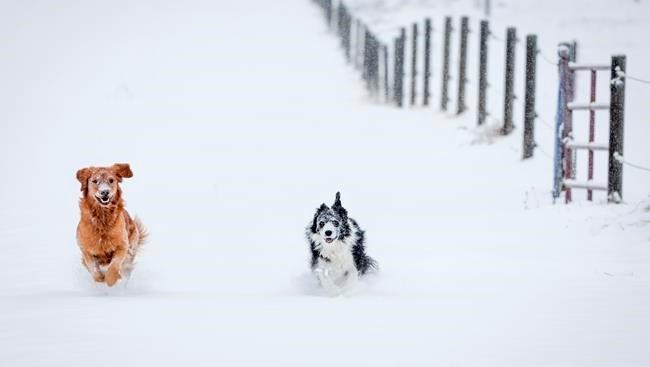TORONTO — In past autumns, when Jocelyn Rutgers tried to enjoy the extra hour of sleep offered by the end of daylight time, her cat would hold firm to his daily regimen and demand to be fed as usual.
“My cat in particular is extremely routine-based and likes to be fed at his preferred times,” said Rutgers, a registered veterinary technician based at the Ontario SPCA Midland Animal Centre.
“He tends to get quite loud and meow at me when he knows it’s breakfast or dinner time. Any changes from those times and he lets me know about it.”
While seasonal time changes have been associated with health complications like headaches and heart problems for humans, Rutgers says many owners of finicky pets may find them extra ornery when daylight time ends in the wee hours of Sunday morning.
That’s because, like us, pets have natural circadian rhythms and internal biological clocks tuned to cycles of light and dark. But their feeding, exercise and medication schedules are also closely linked to their owners’ daily routines, she said.
From the animals’ perspective, everything in their routine will be delivered an hour later than usual when clocks fall back an hour, said Toronto-based veterinary behaviorist Karen Van Haaften.
“If you get up and walk your dog every day at 7 a.m., then that dog is behaviourally and physiologically ready to walk at 7. They’re going to be excited, their bladder is going to be full, they expect to go outside at that time,” said Van Haaften.
“If you think you can sleep in an hour later that day, they might not have the same opinion.”
Standard time rolls back at 2 a.m. local time Sunday for most provinces and territories, and lasts until March 10. Yukon and most of Saskatchewan keep their clocks the same year-round.
The change means darkness will arrive earlier in the evening and daylight starts earlier in the morning, prompting cities like Mississauga, Ont., to remind drivers, pedestrians and cyclists to be alert on the roads during and after the fewer daylight hours.
Not all pets will notice the difference, but for those on strict schedules, Van Haaften recommends making small incremental changes of 10 or 15 minutes in the week or days leading up to the change to help them gradually transition.
If you haven’t prepared in advance, the Ontario SPCA and Humane Society recommend feeding your animal 30 minutes later than usual the day of the time change. Alternatively, you can ignore the time change and gradually change scheduled activities by 15 minute intervals in the days following the switch.
It also helps to payattention to your own routine and circadian rhythm, Van Haaften added, because your pet will notice if you’re feeling off.
Rutgers, of the SPCA, said smaller animals like birds, amphibians and those that are nocturnal aren’t as strict with their routines as cats and dogs, and may have an easier time transitioning.
She also recommended using the switch as an opportunity the check that smoke and carbon monoxide alarms are working properly, and to update or create a household emergency preparedness kit that includes pets.
“A lot of people don’t think to have one for their pets,” she said of prepping an emergency bag in the event of an order to evacuate or shelter in place.
The SPCA’s website says a pet emergency survival kit could contain three days’ worth of food and water including bowls, medications, medical records and a pet first aid kit.
“For most cats, dogs and people, the time change isn’t a huge deal,” Rutgers said.
“The key is to have a routine and stick to it.”
This report by The Canadian Press was first published Nov. 3, 2023.
Tyler Griffin, The Canadian Press
